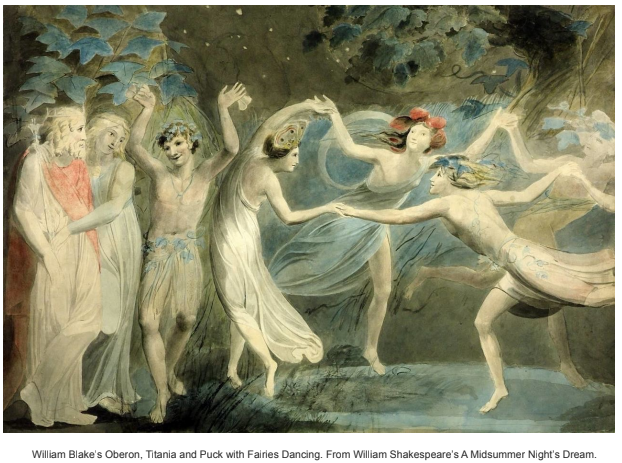
Midsummer is the period of time celebrated after the summer solstice. The celebration predates Christianity, and has existed under different names and traditions around the world. The sun, on the solstice (meaning standing still,) is seen to be moving again. It is the peak point of the rising tide of the solar in- breath for those in the northern hemisphere – and of the out-breath for those south of the equator. June 24th is known throughout Europe as Midsummer’s Day and bonfires are lit to drive out evil forces and to renew the reproductive powers for the year. For the pagans and gypsies, it is a time to bathe “sky clad” while honoring the Sun.
The Freemasons celebrate this day as the “Festival of John the Baptist” who is seen as a bright and shining light. it is believed to be his birthday and is the first day of their New Year. June 24th was chosen to mirror the birth of Jesus, December 25th, three days after the winter solstice, when St John, the Evangelist, was born. Freemasonry historically sees both St. John the Baptist and St. John the Evangelist as its patron saints, reveres their memory, and points to their exemplary lives in its ritualistic work, According to pagan folklore, evil spirits would appear on midsummer’s day. To ward off evil spirits, people would wear protective garlands of herbs and flowers.
One of the most powerful of these plants was known as “chase devil.’” Today it’s called St. John’s Wort, because of its association with St. John’s Day. It’s so interesting how how all of these different belief systems become intertwined – although I do not think the Masons are doing their New Year celebration “sky clad!”
In ancient China, midsummer celebrations honored the Earth, femininity, and yin. Interestingly, with the most intense yang energy of the solstice lessening and turning southward, the coming influence of the yin energies was now celebrated. This energy would gain in power and influence until it reached its height on the winter solstice. Honoring the balance between these two forces was and continues to be extremely important in the Chinese culture. It is believed that if these cycles become out of sync, an imbalance will occur and bring bring catastrophes.
For cultures worldwide, gold was the earthly symbol of the sun. It was seen as the royal metal because it was incorruptible and sacred to the solar deities. Magical rituals and ceremonies were performed in sun temples around the world (especially during this week) to maintain the balance and harmony of nature.
Gold symbolized the union of heaven and earth in perfect love on all planes. Some traditions of this union, like the wedding ring, have survived. The golden ring (sun-circle) is still placed on the ring finger which is named Apollo, after the sun god! Traditionally, most weddings took place in June (still do,) so the fruit of the union would be born in the spring – ideally!
To carry this metaphor further, the sun was seen as analogous to the heart and the majority of gold in the human body is located in the heart! Lily Kolisko in her great pioneering work on the relationship of metals to the planets, found that gold chloride when activated by the sun on her filter paper usually crystallized in rich pictures as golden yellow, peach blossom to violet. In Feng shui, “peach blossom” is known as “the color of romance.” Goethe, in his color theory, saw the purest color as peach blossom.
We are in a magical moment!



